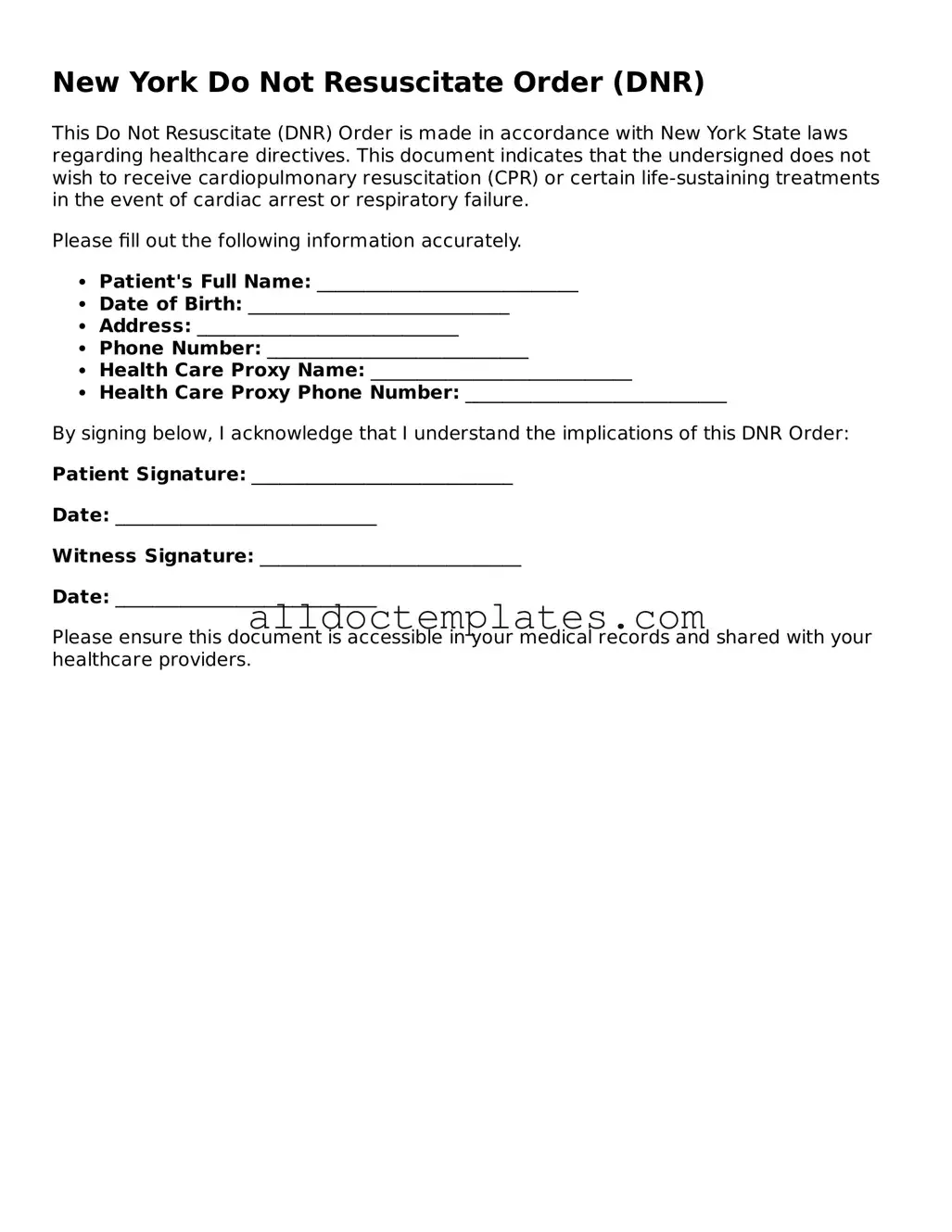Free Do Not Resuscitate Order Document for New York State
A Do Not Resuscitate (DNR) Order form in New York is a legal document that allows individuals to refuse resuscitation efforts in the event of cardiac or respiratory arrest. This form is crucial for ensuring that a person’s healthcare preferences are respected during critical medical situations. Understanding the implications and requirements of the DNR Order is essential for both patients and their families.
Get Your Form Now
